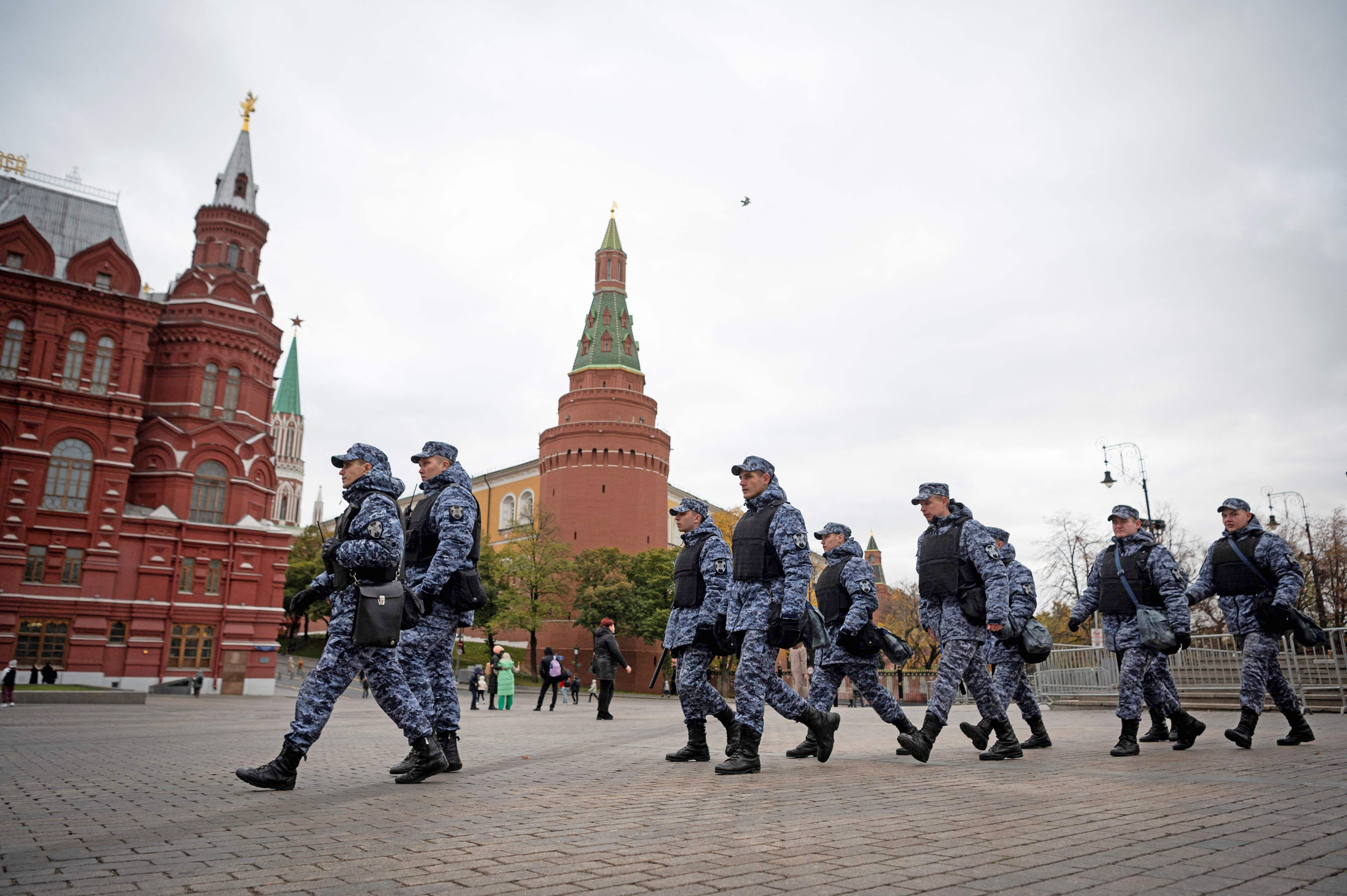
Unlock the US Election Countdown newsletter for free
The stories that matter on money and politics in the race for the White House
Russia is once again waving around its nuclear weapons. Last week, Vladimir Putin warned Nato countries against allowing Ukraine to use western munitions to strike Russia. The Russian leader warned of “serious consequences” and said that Ukraine’s allies should be aware of the “small territory” and “dense population” of many European countries.
In case this was too vague, Dmitry Medvedev followed up with a more blood-curdling threat. Russia’s former president cited Putin’s words and added: “The use of tactical nuclear weapons can also be miscalculated. This would be a fatal mistake.”
Medvedev has a reputation as a man who is fond of strong drink. But Moscow has also taken actions recently to underline its threats, with Russian troops conducting nuclear drills near the border with Ukraine.
These moves have not deterred several Nato nations, including the US, from taking the latest step up the escalation ladder by approving the use of their weapons inside Russian borders.
This latest move by Nato nations reflects a mix of confidence and nervousness. On the positive side, the US and its European allies are now less concerned about the threat that Russia will go nuclear than they were 18 months ago.
On the negative side, they are also increasingly uneasy about the situation on the battlefield. The new willingness to allow Ukraine to strike back at enemy artillery positions and missile bases — even if they are inside Russia itself — reflects a concern that Ukraine is gradually losing the war. As a result, Kyiv’s western backers feel compelled to tolerate a greater level of risk to keep Ukraine in the fight.
The west’s willingness to take on this level of risk represents a dramatic shift in thinking since Russia’s full-scale invasion in February 2022. Back then, Nato countries were nervous about providing Ukraine with any offensive weapons.
The provision of each new significant capability to Kyiv — long-range missiles, tanks, fighter jets — has been accompanied by prolonged, sometimes agonised, debate in the west and by nuclear threats from Russia. But each time the Nato countries have crossed a threshold, the Kremlin has failed to make good on its nuclear threats. And that has made it easier for the western alliance to take the next step.
But the fact that the US and its allies are no longer quite so anxious about Russia’s nuclear posturing does not mean that they dismiss the threat completely. Indeed, there are some western officials who remain very uneasy about the potential for escalation involved in authorising the use of weapons, provided by the west, to strike Russian territory.
Their concern is that Russia will regard this latest step as the escalation of a proxy war by the west and could make what it regards as a symmetrical response — involving counterstrikes on Nato territory. That might lead Russia and Nato very close to the direct conflict that western leaders have always sought to avoid. Russian military doctrine is believed to assume that Moscow cannot prevail in a conventional war with the west, and so to envisage the early use of nuclear weapons.
Despite talk by Emmanuel Macron, France’s president, of eventually stationing French troops on Ukrainian soil, the western alliance is still trying to maintain its clear red line against direct involvement in a conflict with Russia.
When Iran recently loosed off a barrage of missiles at Israel, the US and its allies got directly involved in shooting them down. Ukraine has received no such support against Russian missile assaults on cities and infrastructure — partly because of the risk that western air forces might end up shooting directly at Russian forces.
Even now, the US has put significant restrictions on how far Ukraine can go in striking back against Russian forces with US-provided weapons. The new policy is that Ukraine is free to strike at Russian forces that are firing into Ukraine from just across the border. But strikes at targets deep inside Russian territory are still off the table.
Despite the concerns about Russia’s potential response to this latest move, US decision makers still think that the circumstances that could trigger a Russian nuclear response are fairly distant. The two situations that are most often mentioned are if the Russian army is about to be routed on the battlefield; or if Ukrainian ground forces threaten Crimea, which Russia formally annexed in 2014.
The closest that the world has come to a real nuclear crisis over Ukraine, so far, was in October 2022 — when Russia suffered a series of catastrophic setbacks in the war, including the loss of Kherson. There was one weekend when western officials became seriously concerned that Russia might be on the point of going nuclear.
But that crisis also created a new playbook for how to deal with Russian nuclear threats, when they look really serious. Step one is to talk to Russian counterparts and to threaten direct and massive western involvement in the conflict. Step two is to talk to other major powers — in particular, China and India — and to get them to warn Russia off, preferably in public.
For the moment, this playbook is back in the desk drawer. But it may have to be brought into operation once again before the war in Ukraine comes to an end — one way or another.
